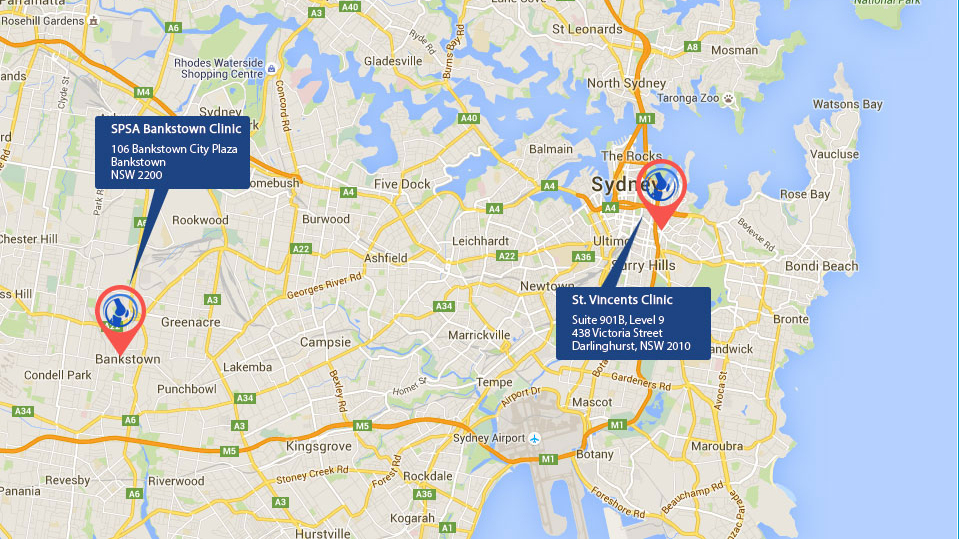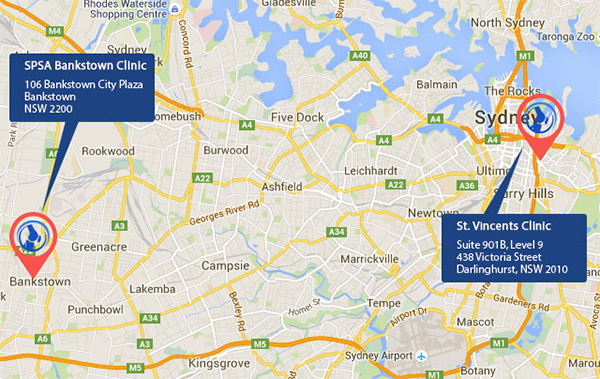Hip Replacement
What is the Hip Replacement?
Once your hip pain or mobility has not responded to conservative treatment, you may well be a candidate for total hip replacement surgery.
Hip joint replacement helps patients in the treatment for severely diseased hip joints.
The procedure replaces part or all of the hip joint with an artificial and functional device (prosthesis) and a plastic liner in between to restore joint movement
Hip replacement is one of the most effective operations known and is designed to:
- relieve pain
- reduce symptoms
- restore mobility
- regain function
- resume normal lifestyle
Causes of Hip Replacement
The hip joint can become worn-out most commonly as a result of osteoarthritis but may also result from other causes such as trauma, local tears, infection or other diseases.
Just like a car’s wheel that is not balanced or aligned properly can cause premature tyre wear, a hip joint’s mechanical function can be affected by disease causing faster degeneration.
Some of the most common drivers that can give rise to Hip Replacement Surgery are:
Degenerative
Older patients are more prone to hip fractures and deformities caused by osteoporosis as patients bones become:
- less dense due to tissue loss
- softer and more brittle
Cartilage Wear
As the hip cartilage is degraded over time due to osteoarthritis it will not return. This condition typically will not improve over time and can be painful and debilitating.
Hip Fractures
Broken Hip may cause unresolveable joint damage and require replacement of the hip joint. Even many years after an injury or fracture, hip joint replacement may be required. Over time the hip degenerates and can result in a narrowing of the neck of the thighbone.
Hip fractures are a common injury in people who have osteoporosis, or thinning of the bones as well as Avascular necrosis (AVN) sufferers.
Femoral Acetabular Impingement (FAI)
Femoral acetabular impingement (FAI) has been suggested as a cause of premature osteoarthritis. This may be the reason we see younger and younger patients developing arthritis.
Genetic
There may be a genetic tendency in some people that increases their chances of developing osteoarthritis. Abnormalities from some hip conditions can appear in childhood and can lead to earlier degeneration. This mechanical abnormality causes excessive wear and tear
Rheumatoid Arthritis
While Rheumatoid Arthritis’ trigger is unknown, the swelling caused by inflammation of synovial joints can result pain and morning joint stiffness. If the condition can not be treated with medication it can give rise to Hip Replacement Surgery.
Avascular Necrosis
Avascular necrosis can cause degeneration of the hip joint. This disease can cause blockage of the artery to the femoral head. Starved of nutrients the hip’s femoral head dies and may collapse. This malformation and degradation does not allow the Hip’s ball and joint mechanism to function smoothly.
Avascular necrosis (AVN) can also be caused by diet and alcoholism.
Perthes’ Disease
Perthes’ disease mainly affects children (3 – 11 year olds). The disease softens the femur ball due to a poor blood supply. While most Perthes’ disease sufferers recover and regenerate bone, the disease can leave lasting damage.
Slipped Capital Femoral Epiphysis
Early development problems of the femoral ball can give rise to Hip problems for patients in their teens. The ball slides out of position causing the leg to turn outward. Contributing factors to this condition including increased hormones and weight gain with age.
Without treatment, slipped capital femoral epiphysis can worsen and the child may experience arthritis of the hip joint in later life.
Dysplasia Dislocations
Developmental problems of a newborn’s joint can cause dislocations because of a shallow socket. This form of dysplasia prevents a stable fit. Causes for developmental dysplasia include breech births, family history and other disorders such as spina bifida.
Slack ligaments may also allow the femoral head to slip out of joint. Dysplasia is also linked to long term use cortisone medication.
Ankylosing Spondylitis
While an uncommon form of inflammatory arthritis it can affect hips.
Typical symptoms include pain and stiffness first thing in the morning. Ankylosing spondylitis can occur by itself or in association with other disorders, including Crohn’s disease, ulcerative colitis and psoriasis.
While this list is not exhaustive any unresolved problems of the hip causing prolonged pain are normally reasons for Hip Replacement Surgery.
Hip Replacement Symptoms
Prolonged symptoms indicating serious Hip problems:
- pain in the hip joint (particularly in the groin)
- radiating pain from the Hip to thigh and knee
- ‘clunking’ in the Hip
- difficulty walking resulting in a limp
- muscle stiffness
The pain is often made worse with simple activity like putting weight through a leg or rising from a chair.
Hip pain can also be felt down the front of the leg, and buttock (although pain in this area can also be caused by problems with the lower back). This is called referred pain, and it’s fairly common.
Other prolonged symptoms can include:
- loss of full range of motion
- inability to either bend or fully straighten the Hip
- a tendency for your Hip to get “stuck” or lock up
- audible ‘clicking’ or a sense of ‘grating’
Diagnosis for Hip Replacement
Dr Nick Vertzyas will need to diagnose the specific nature of the Hip disorder or the extent of any osteoarthritis in the Hip joint.
Often, Hip disorders can be identified during a physical exam by a medical professional. By examination of the Hip joint and leg bones the cause of symptoms can be pinpointed. Diagnostic methods are:
Consulation – During this consultation Dr Nick Vertzyas will:
- take a medical history
- perform a physical examination
- assess the joint’s range of motion
Blood Test – there are is no blood test for osteoarthritis
Imaging tests – In order to clearly understand the nature of the hip joint, imaging scans are required:
- X-rays – do not show cartilage but are often normal as they can help rule out other problems with the Hip that may have similar symptoms like fractures (broken bone) or bone deformation.
- MRI – can create detailed images of both hard and soft tissues within your Hip. An MRI can produce cross-sectional images of internal structures required if the diagnosis is unclear or if other soft tissue injuries are suspected such ligament injuries or articular cartilage injuries.
- Ultrasound – can allow the doctor to examine the inside of your Hip in motion. This can help determine if you have a loose flap of cartilage getting caught between the moving parts in your Hip.
While not all of these approaches or tests are required to confirm the diagnosis, this diagnostic process will also allow Dr Nick Vertzyas to review any possible risks or existing conditions that could interfere with the surgery or its outcome.
Hip Replacement Surgery
While not everyone requires surgery, where surgery is recommended each patient’s treatment path is tailored to the patient’s individual needs.
Hip Replacement Surgery involves the removal of the diseased joint and bone and a new ball and socket joint is inserted.
About Hip Prostheses
There are many different types of artificial joints available, all made from different materials and offering different bearing surfaces.
Types of Hip Replacement Surgery
Once Dr Nick Vertzyas and the patient have agreed that Hip Replacement Surgery Dr Nick Vertzyas will often discuss the options available and what the patient’s preferences are.
The ideal approach to the hip depends on the individual patient’s anatomy. Surgical approaches can include:
- Posterior Hip Replacement
- Anterior Hip Replacement
- Anterolateral Hip Replacement
Dr Nick Vertzyas Hip Surgery Recommendation
Minimally Invasive Posterior Approach
- Excellent exposure for all Aetiology
- Extensile for more extensive procedures including revisions
- With excellent results with a low complication rate
Surgical Methods
Minimally Invasive Surgery
Dr Nick Vertzyas ideally uses minimally invasive techniques this involves inserting the implant through a minimally invasive muscle splitting, tissue preserving surgical incision.
Minimally invasive technique can be used with all surgical approaches to the hip including the:
- direct anterior
- anterolateral
- posterolateral
Computer Assisted Orthopaedic Surgery
Accurate alignment of the hip components is critical to the overall function and improved outcomes after Hip surgery.
Untreated Hip Disorders
Hip disorders are not life threatening but it can severely impact your quality of life and function.
It can affect anyone: elite athletes and the active individual, manual labourers and office workers.
The Hip is a pivotal body structure and if untreated damage to the musculoskeletal system can lead to
- ongoing pain and disability
- further joint damage and worsening symptoms
- increased osteoarthritis
Risks with Hip Replacement Surgery
Once the hip has been replaced the prognosis is typically excellent. Complications are not common but can occur.
Prior to making any decision to have surgery, it is important that you discuss any concerns with Dr Nick Vertzyas and understand the potential risks so that you can make an informed decision regarding the surgery’s advantages and disadvantages.
While complications due to surgery are uncommon they can occur, the following are some:
- numbness or tingling in the groin
- some discomfort leg, thigh and buttock region
- joint stiffness
- local nerve or blood vessel damage
- reflex sympathetic dystrophy
Rarely do these complication prevail over the long term.
It is important to avoid high impact activities during the early phase of recovery to minimise the risk of fracture.
Other general medical and surgical risks can include:
- risk of infection
- bleeding and clots in the leg (DVT) or lung post-operatively
- allergies and anaesthetic complications can occur
If there are any postoperative concerns or pain please do not hesitate in contacting Dr Nick Vertzyas or the rooms.
Preparing for Hip Replacement Surgery
Once Dr Nick Vertzyas decides that surgery is required, preparation is necessary to achieve the best results and a quick and problem free recovery.
Preparing mentally and physically for surgery is an important step toward a successful result.
- Dr Nick Vertzyas will create a treatment plan and
- patients will also need to understand the process and their role in it.
Participating and completing a tailored exercise program before (ie. pre-hab) with a trained physiotherapist will achieve the best result after surgery.
Dr Nick Vertzyas will also need to:
- discuss any medications being taken with your doctor or physician to see which ones should be stopped before surgery
- do not eat or drink anything, including water, for 6 hours before surgery
- stop taking aspirin, anti-inflammatory medications or drugs that increase the risk of bleeding one week before surgery to minimise bleeding
- review blood replacement options with your doctor
- consider alternate medical interventions and other treatments
- eat a well-balanced diet, supplemented by a daily multivitamin with iron.
- consider losing weight (if overweight) before surgery to help decrease the stress on the new joint.
- stop or cut down smoking to reduce your surgery risks and improve your recovery
- treat any tooth, gum, bladder or bowel problems before surgery to reduce the risk of infection
Report any infections to Dr Nick Vertzyas prior to surgery as the procedure cannot be performed until all infections have cleared up.
After Your Operation:
Recovery
Most patients need 3-5 nights in hospital. The incision wounds take 14 days to heal.
Most patients improve dramatically in the first 6 weeks. Occasionally, there are periods where the Hip Replacement may become sore and then settle again. This is part of the normal healing process.
It takes three months for your Hip Replacement to fully recover from Hip Replacement. Continued improvements may be gained up to 1 year post-surgery.
Complications
If any postoperative problems arise with your Hip Replacement, such as redness, increasing pain or fevers, do not hesitate to contact Dr Nick Vertzyas. If unavailable, seek advice from the hospital or your doctor.
Pain Management after Hip Replacement Surgery
Your experience of pain will vary depending on the procedure performed and the amount of pre-existing damage in the Hip Replacement.
After your operation you will have pain medication and antibiotics.
Most patients are pleasantly surprised at how little pain they have after the procedure. Local anaesthetic is injected before and after the procedure to minimise any pain you may feel.
Mobility
Walking – full weight-bearing and walking is allowed immediately. Initially, this will be aided by crutches. Most people will walk independently by 10-14 days post-operatively.
Return To Work After Hip Replacement Surgery
Return to work will vary depending on the procedure performed and type of work you are engaged in. Most people can return to office work within 2-3 weeks. Labour intensive work however, may require you to take 12 weeks before returning to full duties.
During these period patients are not fit to perform work duties that involve:
- prolonged standing,
- heavy lifting,
- bending or
- excessive stair climbing
Return To Sport
Activities or sports can be restarted after the wound is healed, this means postoperative swelling has subsided and range of movement is restored. However, it is best to delay leisure activities or sports for 6 weeks to allow the arthroplasty time to heal and repair.
Low impact activities, such as cycling and swimming, can be commenced from week 6.
Sport specific re-training can commence from week 6, with the aim to return to elite level sports 2-3 months post-surgery.
Post Operative Rehab
Participating and completing a tailored exercise program after surgery (ie. rehab) with a trained physiotherapist will achieve the best result for you after surgery.
Postoperative follow up
Some Postoperative complications are asymptomatic. For this reason, you must have your joint followed up for life as there can be changes on X-rays that indicate that the hip should be revised despite having no symptoms.
Recovery Plan for Hip Replacement Surgery
Recovery from Hip Replacement Surgery continues to improve from 6 months up to a year post operatively.
The physiotherapist will prepare an exercise programme. Much of the exercise programme can be done at home or at a gym, under your physiotherapist’s guidance.
Strong pain relief may be required for pain management for the first 5-7 days. Thereafter, regular over the counter Panadeine should be enough to control the pain (especially at night).
Week 1:
- Ice your Hip Replacement as directed by your physiotherapist
- Full extension (make sure your Hip alignment is straight)
- Full weight-bearing, wean off crutches
- Quads and hamstrings co-contractions
- Straight leg raises
- Ankle range of motion (ROM) exercises
If unsure about the exercise program after leaving hospital, a physiotherapist appointment will be required..
Week 2 – 6:
The first postoperative appointment with Dr Nick Vertzyas is needed 6 weeks following surgery. A postoperative Hip X-Ray is required prior to to this review appointment.
- Full weight-bearing – no limp – gait training
- Ice before and after exercise till swelling has dissipated.
- Isometric quad exercise
- Isokinetic closed chain exercises.
- Step work, leg press, squats
- Active Hip flexion and extension
- Stationary bike
- Swimming – no restriction
- 21 days commence proprioception
Weeks 6 – 12:
An appointment with Dr Nick Vertzyas should be made at 6 weeks post surgery, with an X-Ray of your Hip.
After Week 12
The results of Hip Replacement surgery are good in ~ 95% of cases.
Recovery from Hip Replacement surgery can be a slow process
- by 6 months the Hip Replacement is usually strong enough to resume all sports.
- by 12-18 months recovery is normally fully completed.
- there is no restriction to range of motion
- no bracing required
Outcomes
Realistic activities following total hip replacement include unlimited walking, swimming, golf, driving, hiking, biking, dancing, and other low-impact sports.
With appropriate activity modification, hip replacements can last for many years.



















